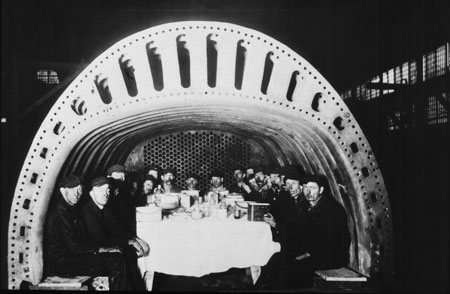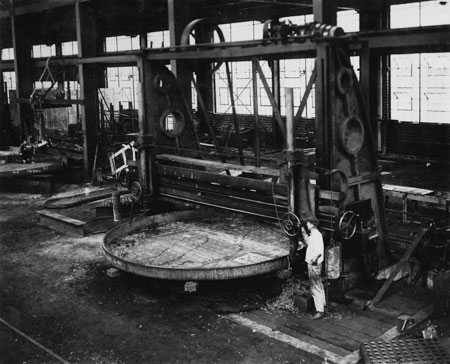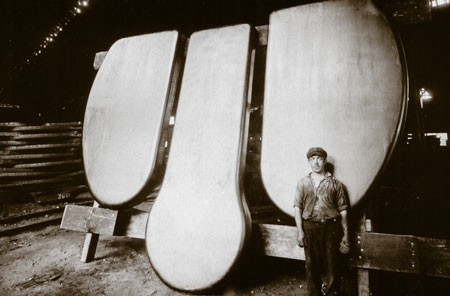Birth Of Steam
In the late 18th century, the Industrial Revolution began to transform America and
Europe. New technology and innovations led to the rise of mass production and a new
economy. The workforce, which had previously been based upon agriculture in the country,
now concentrated in the cities and factories. One of the most prominent inventions
that helped initiate this transition was the steam engine. This allowed the growth
of industrialized machinery to work on a constant and consistent basis, enabling factories
to run 24 hours per day. The steam engine also revolutionized ships. Water vessels
could now be propelled by the engine, vastly decreasing the amount of time and energy
needed for their transport. Although inventors from both sides of the Atlantic worked
to invent the steamship, the first ship driven by stream power, an invention of James
Rumsey, was sucessfully propelled by machinery in 1787 on the Potomac River, near
Shepherdstown, West Virginia. Rumsey’s success inspired other inventors, including
Robert Fulton who pioneered the Clermont, the first ship powered by steam to make
a significant journey.
Exhibit Links
Exhibit Made Possible By

Donate To The Museum






